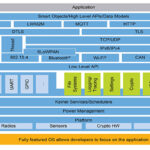The increasing number of threat vectors and the growing size of the attack surface in today’s communication and computer networks demand more powerful and faster threat detection. Legacy tools are no longer adequate. To ensure cybersecurity, high-speed threat detection based on artificial intelligence (AI) and machine learning (ML) is increasingly being deployed.
This article reviews how AI/ML is applied to cybersecurity threat detection. It then presents how a 540-billion-parameter large language model is being used to support continuous improvement in threat detection and stay one step ahead of bad actors.
Many current cybersecurity threat detection implementations are variations of anomaly detection systems. These systems assess network traffic, monitor system activities, and develop baselines of acceptable behavior to detect anomalous conditions and flag potential threats.
Common functions include intrusion detection and intrusion prevention. They are also used to assist in monitoring regulatory compliance. AI/ML systems are good at rapidly sifting through large volumes of data and reducing false positives. They are also adaptable. Examples of how AI/ML can enhance threat detection include (Figure 1):

- Proactively detect threats ranging from malware to potentially disruptive traffic patterns. AI/ML can analyze varying behaviors and accurately identify malicious software and activities.
- Automated response can quickly deal with attacks and vulnerabilities, minimizing damage and speeding recovery. AI/ML can automatically quarantine devices or eliminate malicious system changes.
- Behavioral analysis and monitoring can be important in detecting suspicious activity before it becomes a serious problem. AI/ML can learn to recognize normal behavior based on operating conditions and context and rapidly identify and deal with threatening anomalies.
- Threat prediction complements behavioral analysis and monitoring. Instead of waiting for bad behavior to occur, AI/ML can continuously monitor user activities and traffic patterns and learn to predict threats accurately before they materialize. AI/ML can also analyze network structure and environment to identify potential weaknesses. This can be especially useful in a dynamic threat environment where bad actors modify attacks using different attack vectors and structures.
- Detecting anomalous behavior can reduce the impact of zero-day attacks, which can be particularly troublesome because they exploit a previously unknown vulnerability in software or hardware. AI/ML can analyze large quantities of network data in real-time and identify anomalous activity that might indicate a previously unknown threat. Then, it can quickly isolate the affected systems to protect the overall network.
- Enhance the detection of evolving threats like phishing and modify its detection processes to keep up with an evolving and changing threat environment. AI/ML can learn to identify suspicious traffic, websites, and emails and block the actions of bad actors.
Threat intelligence lifecycle and AI
Developing and deploying AI/ML tools for threat detection is not a once-and-done activity. In one case, large language modeling (LLM) has been implemented with a 540-billion parameter, densely activated, Transformer language model called Pathways Language Model (PaLM). It combines the ability to analyze large quantities of data with a conversational interface, making the resulting knowledge base readily accessible.
PaLM has served as the basis for several LLMs optimized for specific use cases, including cybersecurity (Sec-PaLM). The threat intelligence lifecycle is a process of continuous improvement and refinement. It’s sometimes depicted as a circular process with five phases, including (Figure 2):
 Figure 2. The five elements of the thread intelligence lifecycle. (Image: Google Cloud)
Figure 2. The five elements of the thread intelligence lifecycle. (Image: Google Cloud)
- It begins with collecting the latest cybersecurity intelligence to keep the models updated and ensure continuous learning.
- Structuring and enriching the collected data make it more accessible for LLM processing. AI/ML is used to model the data and prepare it for further analysis.
- Analysis begins by prioritizing the data, ensuring that the LLM, like Sec-PaLM, can quickly sift through a vast amount of data and provide actionable intelligence.
- Actionable intelligence must be disseminated and deployed to network administrators and others to detect threats in specific environments proactively.
- Planning and feedback involve input from network administrators and others on the front lines of the cybersecurity war. The goal is to modify and optimize future data collection efforts, returning to the beginning of the circular and continuous process.
Summary
AI/ML is important for dealing with communication and computer networks’ increasingly complex security environments. These tools can enhance the speed of threat detection, reduce false positives, and improve security. In addition, LLMs have been developed to support continuous learning and improvements that help security professionals stay one step ahead of bad actors.




Leave a Reply